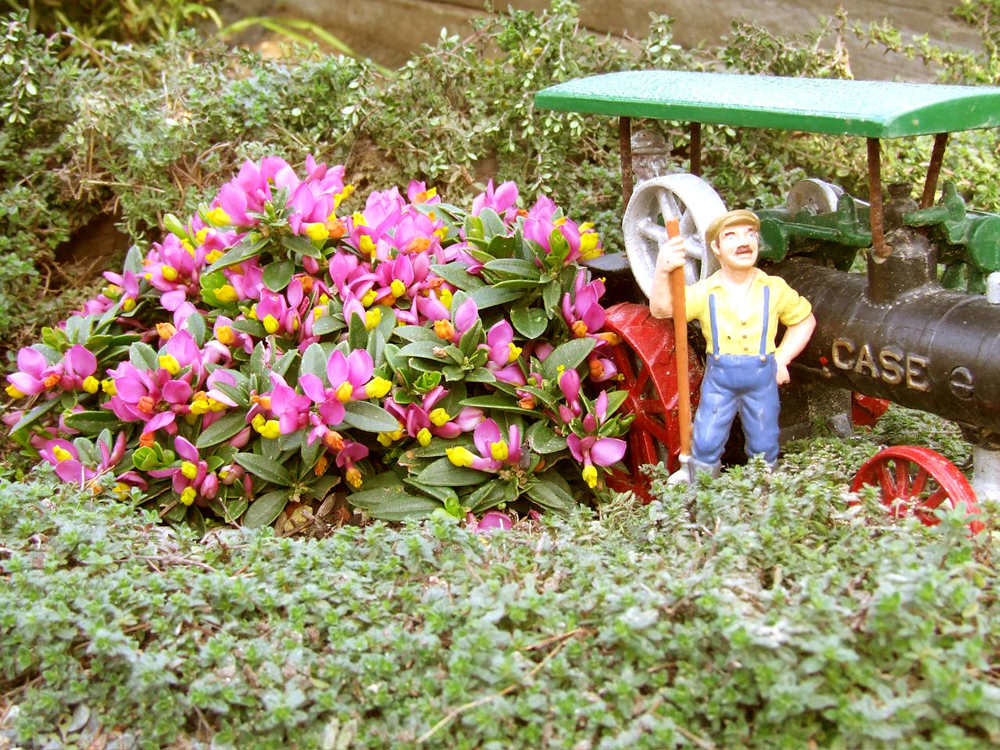Common name: Creeping milkwort, chapparal pea, box-leaved milkwort
Latin name: Polygala chamaebuxus var. grandiflora
Plant type: Perennial
USDA Hardiness Zones: 6-8
Plant size: 4″ (possibly mounding to 10″), spreading very slowly to 2′ wide
Cultural needs: Well-drained, moist, acid soil; sun or bright shade; slow-release evergreen/acidic fertilizer

If we didn’t wait so long to get to the nursery in the spring, we’d all probably have this looker up front in the railway garden. It blooms quite early in the spring but, if you ask for Polygala chamaebuxus var. grandiflora (po-LIG-ala cam-ee-BUCK-sus), you’ll be rewarded with a second blooming in the summer, given the right care. Shocking, pinkish-purple and yellow flowers on tidy, low mounds look like little orchids or pea flowers, thus its common name, chapparal pea. The leaves resemble boxwood, thus its species name, chamaebuxus. Polygala means lots of milk, and it is surrounded by a myth that a tea of creeping milkwort helps cows or lactating mothers make more milk-a good conversation piece, but untrue. Sometimes it is sold as “little gold nuggets,” which is not its cultivar name, but the cultivar, P.c. ‘Kamniski,’ is very similar. This mat-forming, evergreen alpine from the Carpathian Mountains of Central Europe spreads faster in peaty soil. The specimen in the photo, found at www.arrowheadalpines.com, and shown off by a field of woolly thyme, is growing in Zone 9, where it will need shelter from drying summer sun.













